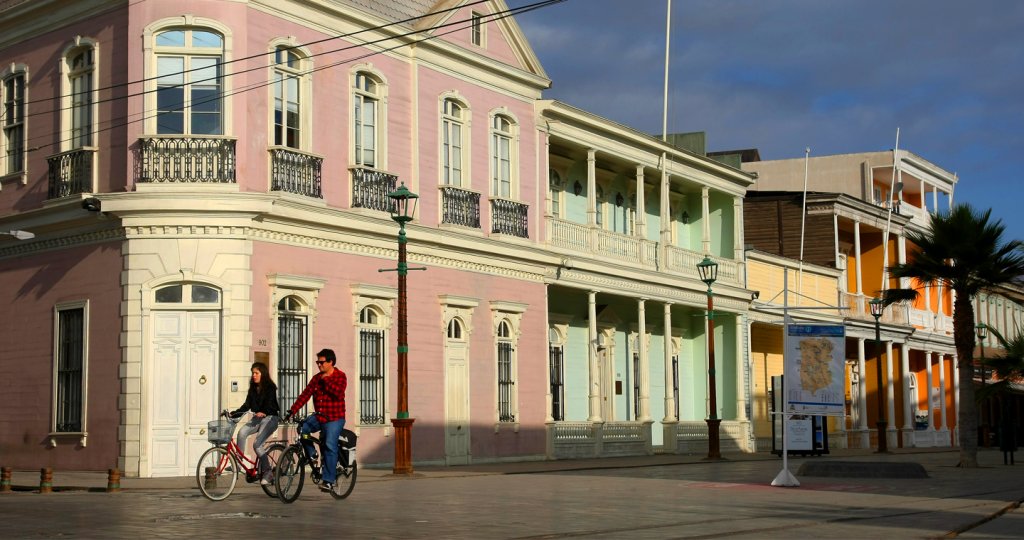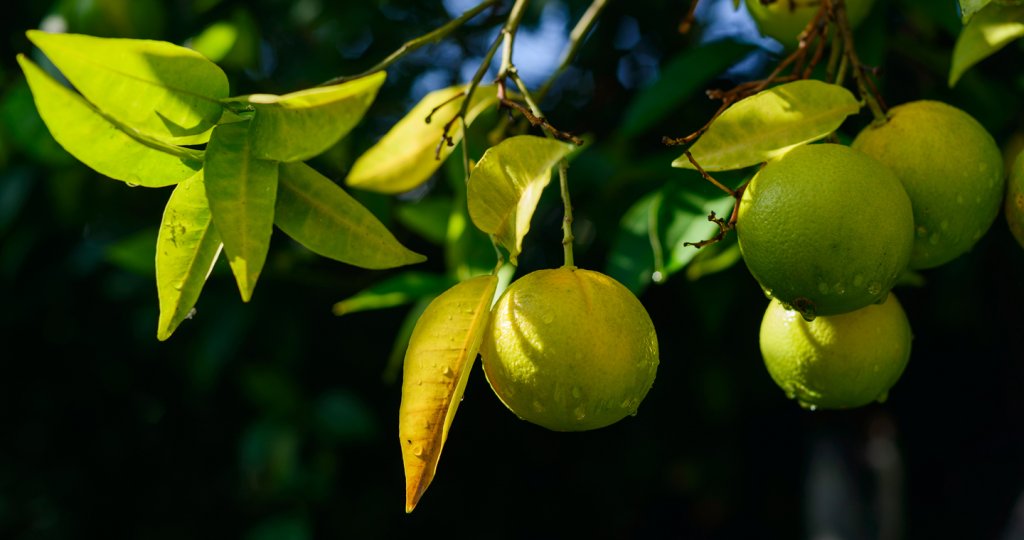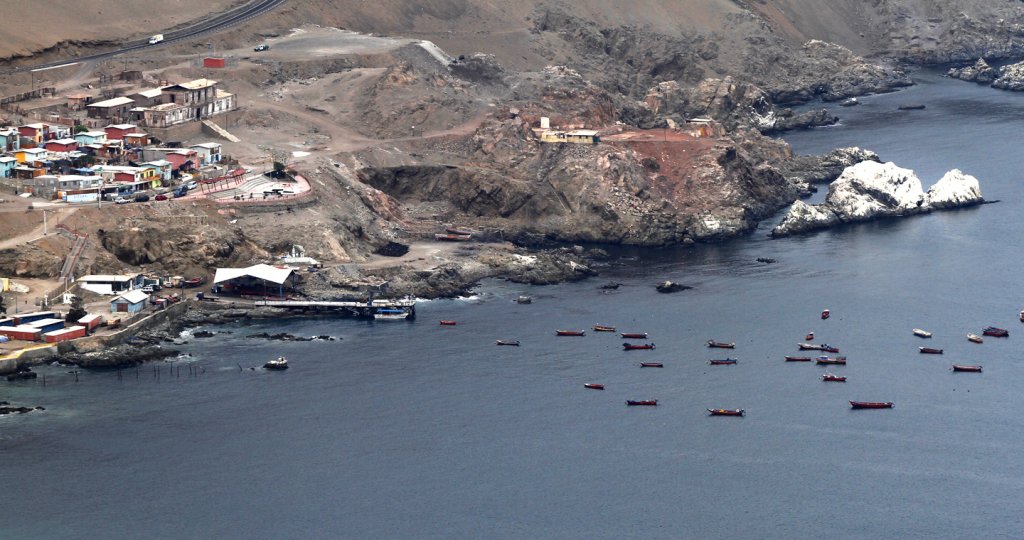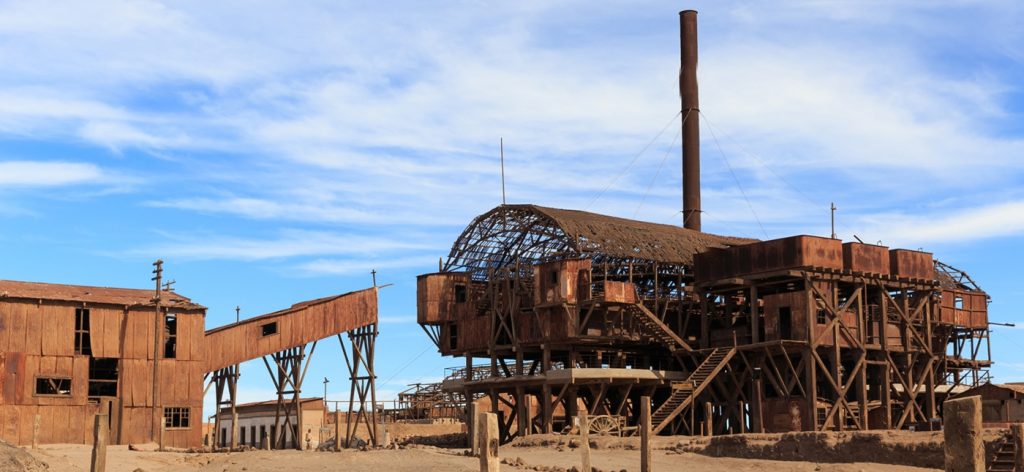



Iquique
Iquique will steal your heart.
Spend your day in front of the ocean, sunbathe on a deck chair, discover the Pacific seabed diving, or get on a jet ski to ride the waves. On its beaches nothing seems impossible and the nightlife is intensely felt in its bohemian establishments, where cultural mix is a constant.
Visit its Free Trade Zone, a business center for Mercosur and Asia Pacific countries, a true shopping paradise, where you will find everything from electronic products to fine perfumes.
Enjoy its fine cuisine in restaurants overlooking the ocean and treat yourself with a traditional mango sour: a drink based on the creamy tropical fruit, one of the city’s treasures along with guavas, grapefruits and lemons grown in its oasis.

Prob. de precipitaciones: 2%Humedad: 35% Viento: a 10 km/h.
-
VIE
-
SAB
-
DOM
-
LUN
-
MAR
-
MIER
Explore the charms Iquique
-
Iquique’s Historic District

Walk around downtown Iquique and let yourself be transported to a time where ladies wore taffeta and used parasols, and men handlebar mustaches. Be amazed by the buildings that maintain the glamour of the abundance of saltpeter times.
Start by admiring the architecture of the Arturo Prat Avenue Customs Office, which also houses the Navy Museum, or walk along the Passenger Pier. There you can get a boat to visit the exact site where the Esmeralda corvette sank during the famous Iquique Naval Battle.
-
Pica

A visit to this quiet village is a trip from which you’ll return completely renewed. Set among salt flats and geoglyphs, discover the village of Pica, famous for fruits like the mango, guayaba, grapefruit and the famous pica lemon.
Come see this desert miracle that gets its water from underground aquifers that accumulate in a sort of port called cocha, which attracts swimmers seduced by its pleasant temperatures and surrounding vegetation.
-
Pisagua

Strolling through its old wooden XIX century buildings call for meditation. This small town keeps the facades that installed the nitrate bonanza. Tour them and learn about their long history of lights and shadows.
Oasis of quiet beaches, it was also the scene of major operations of the Pacific War, and an emblematic place in the history of Human Rights in Chile. A detention center during the XX century that is currently a sort of open-air museum.
-
Humberstone and Santa Laura Saltpeter Offices

The history of white gold involves two nitrate mines that became the largest nitrate deposits in the world at the beginning of the XX century.
The transformation of the nitrate deposits into a community with its own language, organization, customs, and creative expressions enchants to this day those touring these ghost towns in the middle of the Atacama Desert.
Visit the Humberstone mining camp and the industrial area of Santa Laura and relive the days of nitrate glory and the memories of one of the most glorious periods of the country’s history.

Walk around downtown Iquique and let yourself be transported to a time where ladies wore taffeta and used parasols, and men handlebar mustaches. Be amazed by the buildings that maintain the glamour of the abundance of saltpeter times.
Start by admiring the architecture of the Arturo Prat Avenue Customs Office, which also houses the Navy Museum, or walk along the Passenger Pier. There you can get a boat to visit the exact site where the Esmeralda corvette sank during the famous Iquique Naval Battle.
Culture
A visit to this quiet village is a trip from which you’ll return completely renewed. Set among salt flats and geoglyphs, discover the village of Pica, famous for fruits like the mango, guayaba, grapefruit and the famous pica lemon.
Come see this desert miracle that gets its water from underground aquifers that accumulate in a sort of port called cocha, which attracts swimmers seduced by its pleasant temperatures and surrounding vegetation.
Wine and Gastronomy
Strolling through its old wooden XIX century buildings call for meditation. This small town keeps the facades that installed the nitrate bonanza. Tour them and learn about their long history of lights and shadows.
Oasis of quiet beaches, it was also the scene of major operations of the Pacific War, and an emblematic place in the history of Human Rights in Chile. A detention center during the XX century that is currently a sort of open-air museum.

The history of white gold involves two nitrate mines that became the largest nitrate deposits in the world at the beginning of the XX century.
The transformation of the nitrate deposits into a community with its own language, organization, customs, and creative expressions enchants to this day those touring these ghost towns in the middle of the Atacama Desert.
Visit the Humberstone mining camp and the industrial area of Santa Laura and relive the days of nitrate glory and the memories of one of the most glorious periods of the country’s history.















